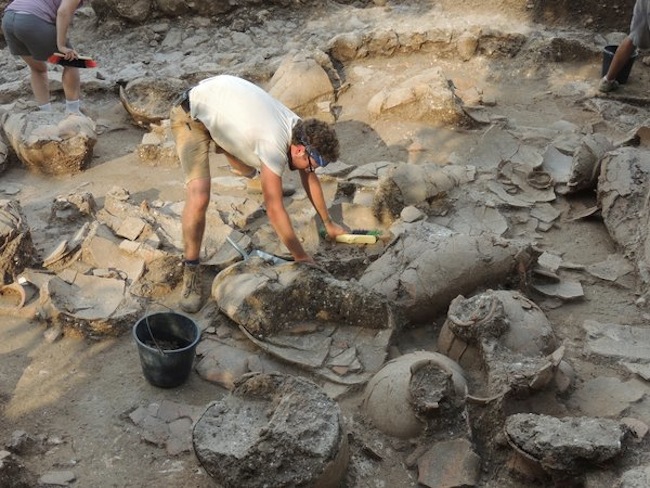Archaeologists announced recently that they found the dregs of ancient wine in about forty ceramic jars while digging this summer at the ruins of a 1700 B.C. Canaanite palace in northern Israel, according to an article in the New York Times. A team of American and Israeli researchers discovered a storage room holding the remains of large ceramic jars. The vessels were broken, their liquid contents long since vanished, but enough chemical composition was present to give the researchers a guess at how the vintage tasted.
A chemical analysis of residues left in the three-foot-tall jars detected organic traces of acids that are common components of all wine, as well as ingredients popular in ancient wine making. These included honey, mint, cinnamon bark, juniper berries, and resins used as preservatives. The scientists speculate that the wines probably tasted something like retsina or other resinous Greek wines of today.
The Canaanite site, known as Tel Kabri, could be one of civilization’s oldest and largest wine cellars. The storage room held the equivalent of about 3,000 bottles of red and white wines, researchers said. There may be more to discover as researchers suspect that this was not the palace’s only wine cellar. “This is a hugely significant discovery,” said Eric H. Cline, a co-director of the Tel Kabri excavations, “It’s a wine cellar that, to our knowledge, is largely unmatched in its age and size.”
Above image: Archeologists excavate an ancient wine cellar in northern Israel, which was once a home to about 3,000 bottles of wine. Photograph courtesy of Eric H. Cline, George Washington University.
Read the full article in the New York Times

Superbly fascinating.
It’s a good reminder to always drink quality alcohol. We don’t want to be embarrassed when archeologists dig up our liquor cabinet 2,000 years from now.